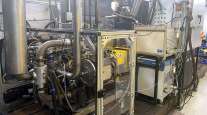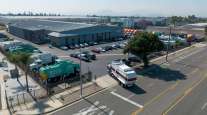Editorial: A Natural Gas Primer
We came. We watched and listened. And we learned. The amount of information that was flowing from the stage during the first day of American Trucking Associations’ Summit on Natural Gas in Trucking last week was prodigious.
And the overflow crowd in the ballroom was certainly paying close attention.
Much has been written and said about the possibilities natural gas may offer to an industry that is currently chained at the ankle to oil and to all of the political issues and instabilities that the petroleum industry presents around the world.
Several panelists mentioned the importance of natural gas being a domestic product, and what that could mean to the United States’ balance of payments issues.
Some speakers also spoke of the political benefits of this nation not having to placate some of the regimes where crude oil flows from in order to ensure an adequate flow of oil to our shores.
Meanwhile, attendees were given lots of information about how natural gas engines work and what they do well and what they don’t do better than diesel engines currently do.
But perhaps the major message that came through on the first day was that the ultimate success of natural gas as a viable alternative to petroleum rested on the success of efforts to improve the infrastructure needed to distribute it and to build vehicles that are up to the task of hauling the nation’s freight around the country.
Up to now, the biggest primary natural gas engine available to North America’s fleets is a 9-liter power plant modified from a diesel engine that is designed to move medium-duty trucks.
There is one 15-liter engine that uses a blend of natural gas and diesel, but that engine hasn’t been widely sold for over-the-road use yet.
The session underscored just how much potential so many companies and analysts believe that natural gas offers the freight-hauling industry down the road because it’s cheaper, it’s local and it’s somewhat cleaner than the alternatives.
What was also obvious from the start of this summit is just how much more work remains to be done and by a host of parties, from fleets to regulators to legislators and manufacturers.
At the very least, the summit’s opening day has provided us with a to-do list that will allow us to fully exploit the potential of natural gas.




